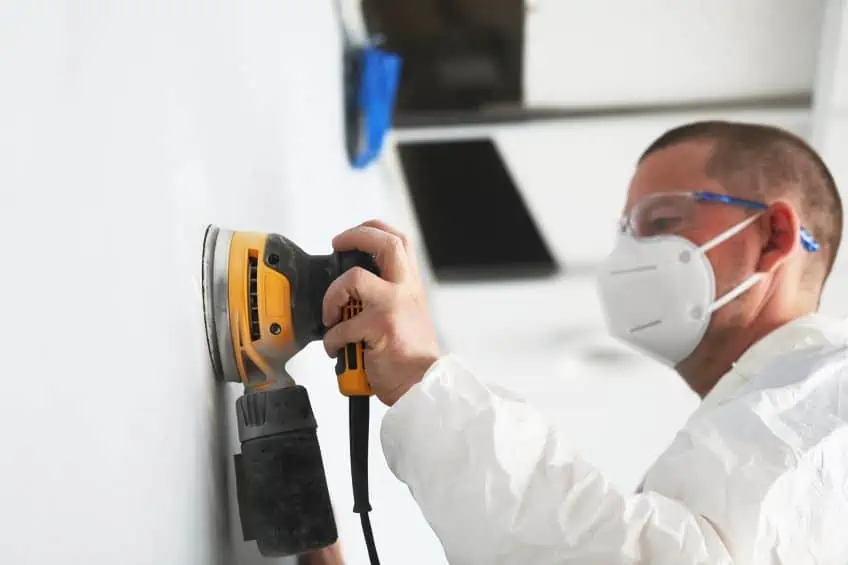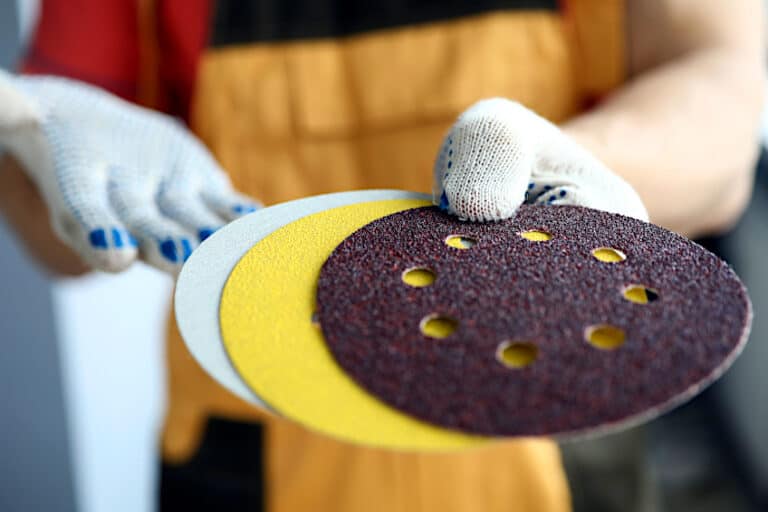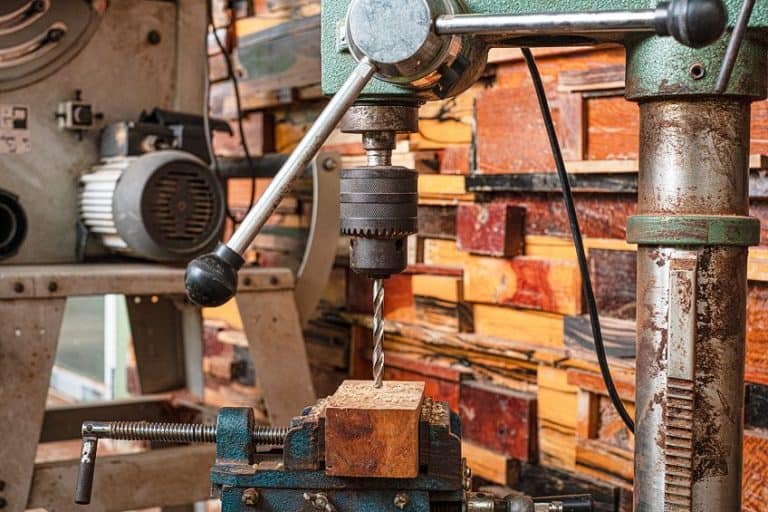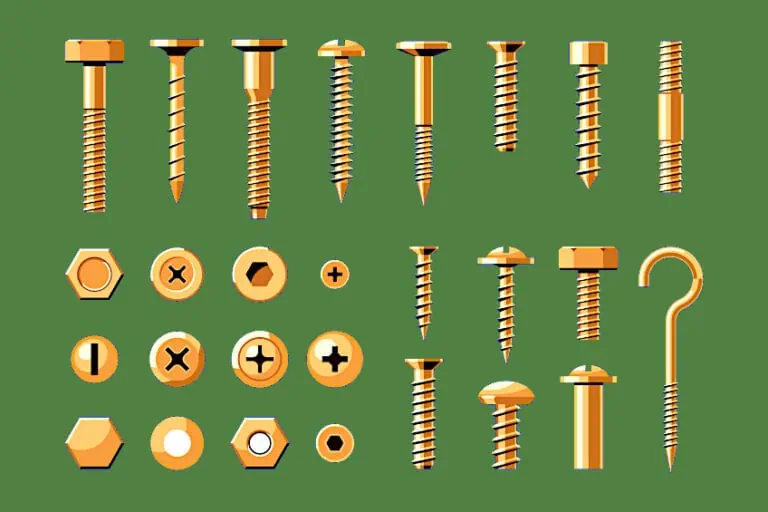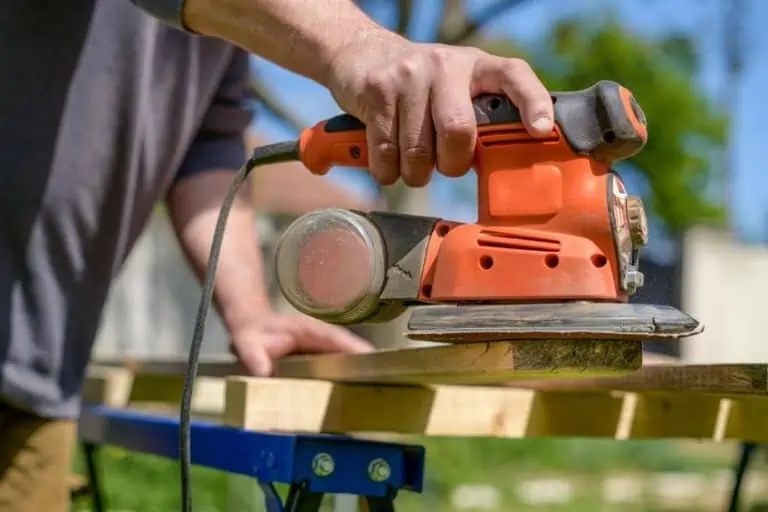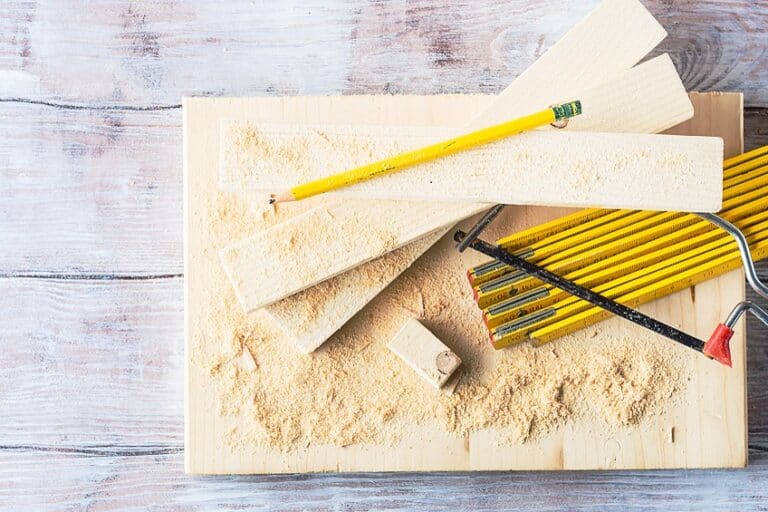How to Sand Drywall – Exploring the Options for Drywall Sanding
Drywall: The sheetrock upon which the USA is built and the material provides the comfort and security we all need in our homes. Not only is it affordable and long-lasting, but it is less labor-intensive to erect compared to brick-and-mortar coverings. Working with drywall can be a challenge though, especially sanding it down after it has been plastered. What kind of sander do you need to smoothen out drywall? How do you keep the dust off everything? What should you look for in a drywall sander? Let’s have a look at some of these questions and more so you can make an informed decision.
How to Use a Drywall Sander
Having the best drywall sander money can buy won’t do you much good if you have no idea how to use it. Starting out sanding drywall can be a challenge, so for your convenience, we have included a short tutorial on how to sand drywall effectively to shorten the learning curve. Remember to work methodically and be patient.
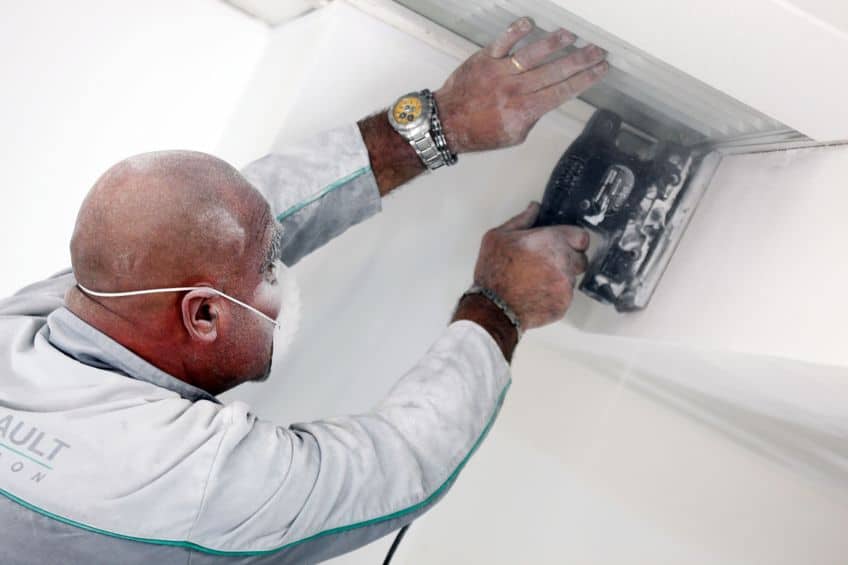
Prepare Your Work Area
As we mentioned previously drywall sanding produces a lot of dust which can cause serious discomfort. Ensure that you have laid down a tarp throughout the area you will be working in, and ensure that the room is closed off in a manner that allows adequate ventilation but won’t allow the dust to travel throughout the structure you’re working in.
Once your work area has been protected, ensure that you are, if you don’t want to get your clothing dirty invest in full-body overalls.
To ensure you don’t inhale drywall dust wear a full-face mask and clear eye goggles. Drywall dust is extremely fine and will get into any exposed area so ensure that your coverings have been taped down and that you only have airflow in the desired direction before continuing to the next step in the process.
Sanding Your Drywall Surface
Once you have your work area (and yourself) prepared there isn’t much else to do but get to work. Pick a spot you would like to begin with and set up the length of your sander’s pole accordingly. Ensure that you have attached your fine-grit sandpaper to the sander and place the sanding end at the top (right or left) corner of the panel you have chosen to start with. Remember that when sanding drywall, the idea is to start with the main surfaces of the panels first and then move on to the joints once a board has been completed.
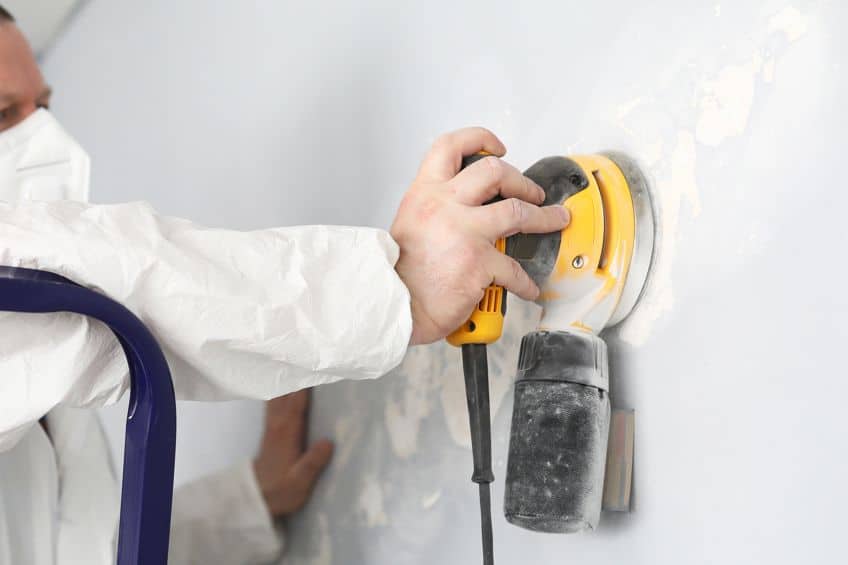
So, start at the top corner of the panel you have chosen and work your way down in a straight line until you are satisfied with the section. Ensure that you don’t apply too much pressure to the surface, or you’ll end up gauging the surface and having to fill it up again, so ensure that your hands are steady and that you are at a comfortable speed setting. Once you have completed the section or “strip” you selected, repeat the process until the board has been sanded completely.
Besides the joints, you should have a surface that is virtually flush before moving on to the next step in the process.
Sanding Your Drywall Joints and Corners
Now for the hard part. Sanding drywall surfaces is relatively simple, on the other hand, sanding corners and joints can be a bit more challenging. When you are sanding drywall joints it’s important not to sand in a straight line as you did with the main surface, instead of sand in a round motion to allow this section to bend with the surface you sanded previously. If you are using a random orbital sander it will make the task significantly easier because you won’t have to apply much pressure or move around much to get the desired result.
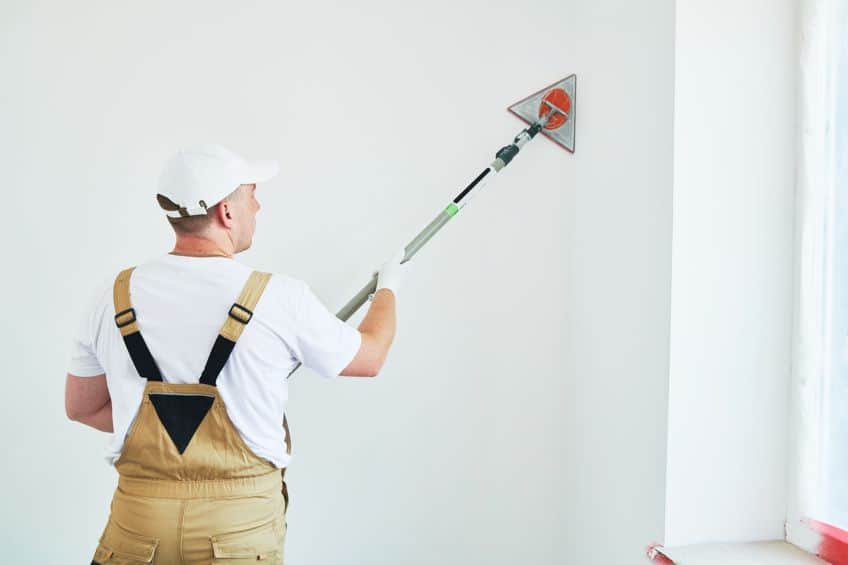
Continue this process down or across the length of the joint in question and ensure that the surface is flush with the primary surface of the drywall. Once you have completed sanding down the point of the section you have selected, it is time to tackle corners. Drywall corners are tricky, but they can be therapeutic in a strange way. Using a sanding sponge, sand carefully and tacking the surface vertically as you did with the primary surface, ensuring that it blends well and is as flush as possible with the rest of the surface.
What Makes Drywall Sanders Special?
What makes drywall sanders so special? Drywall sanding is no easy task, it can get extremely messy very quickly, and more often than not you will need a sander and sanding pads that are up to the task. Why sand drywall in the first place? Well, once drywall plaster has dried it will often be lumpy and uneven, this being said it can be a bit of an eyesore on the inside of your home.
Using a drywall sander will ensure that you have a relatively flush surface throughout your home or office in preparation for sanding, regardless of things like nails, screws, joint compounds, and other points on the drywall surface. Drywall sanding is also useful for removing excess joint compound or plaster where you may have over-applied the substance.
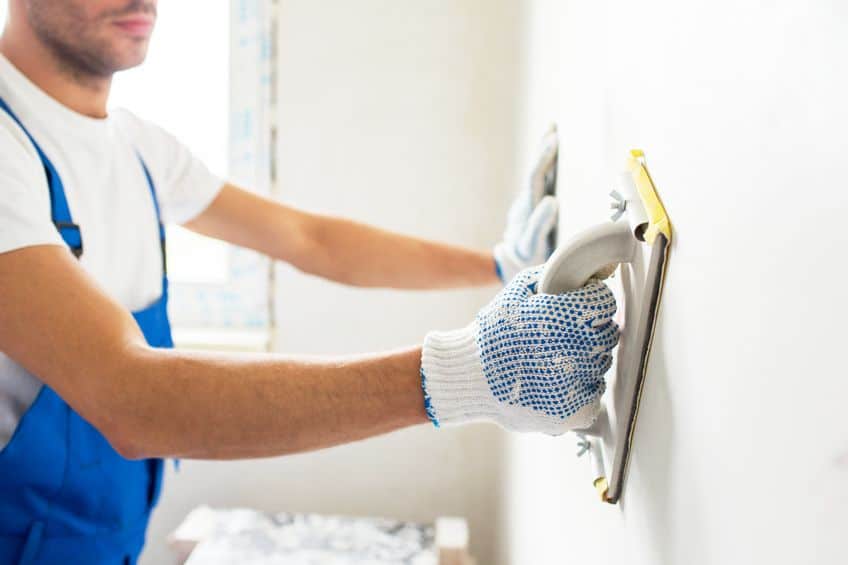
Now that you know why sanding drywall is important, you might be wondering what the difference is between a drywall sander and an ordinary sander, and we wouldn’t blame you. They’re both sanders, right? Well, technically yes, both devices are technically random orbital sanders that perform the same job, but the applications they have been designed for are completely different.
Drywall sanders resemble hand sanders, and they commonly come equipped with sanding paper that is specifically designed for drywall, they are also designed ergonomically to be used on drywalls, ensuring the user’s wrist is not affected during the sanding process. They might also come equipped with sanding sponges for finishing off corners and sidewalls.
In addition to these special tools, the sander might come equipped with an extension pole for sanding down the primer added to the drywall before the paint has been applied, which is an important step in drywall sanding for achieving a smooth finish.
The primary reason that one might seek out a drywall sander is for their party piece, the drywall dust vacuum! This tool is indispensable to both the professional contractor and the DIY weekend warrior, allowing you to clean up one of the most notoriously difficult substances on the face of the plant, drywall dust. Drywall dust is extremely fine and gets into every corner and crack imaginable, it is for this reason that drywall sanders come equipped with an auxiliary vacuum device to assist with dust collection and keep the air in your workspace breathable.
As you have probably gathered by now, drywall sanding is pretty much a nightmare without a drywall-specific sander, but this does not mean it is impossible to pull off with a regular sander.
Which Types of Sanders Work for Drywall?
There are a few sander types you can use for sanding drywall. An electric drywall sander will inevitably have to have quite a few features on hand for the job. Sanding a vertical surface can be a monumental task, so let’s have a look at some of the types of sanders you can use for this exercise.
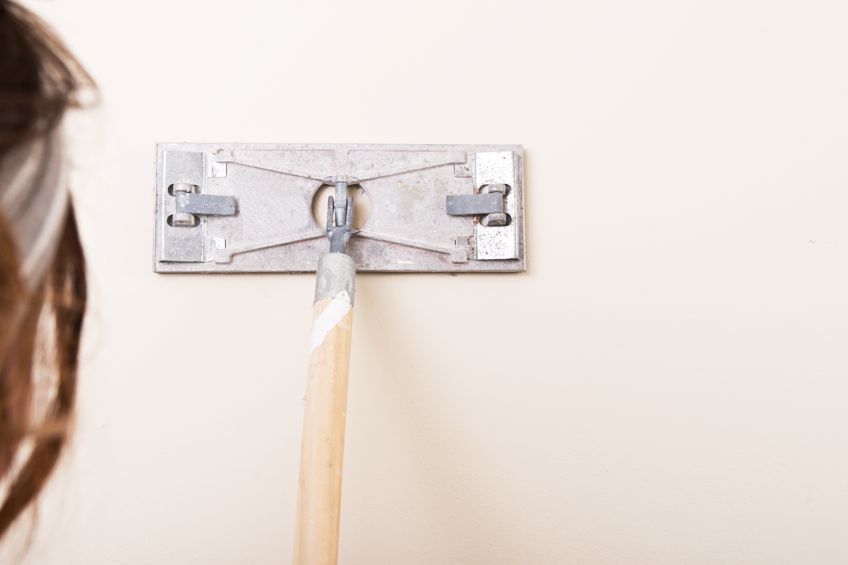
Electric Drywall Sander
This is the tool that was designed to do the job from its inception. This name is sort of generic though, as technically any sander that happens to be electric can be used on drywall. The key difference between this sander and others are a few distinct features that set it apart from other sanders, namely its extension pole, its brushes, its elongated extension cord, and the fact that it collects drywall dust as you work.
This type of sander is used in the same way that you would use one of those really long extension poles, simply by putting it up against the places you want to be sanded (which would ordinarily be out of reach) and resurfacing that area, so it is ready for primer.
This isn’t just some ordinary orbital sander on a stick either, the electric drywall sander’s disk is surrounded by brushes that actively clean off any loosened drywall dust, ensuring that you don’t have to go back to the section you completed and dust it off once you’re done. This type of sander doesn’t just clean the dust off the drywall once it has been removed, in fact, it comes equipped with a vacuum that collects all of the newly free drywall dust and stores it for disposal as soon as you’re done.
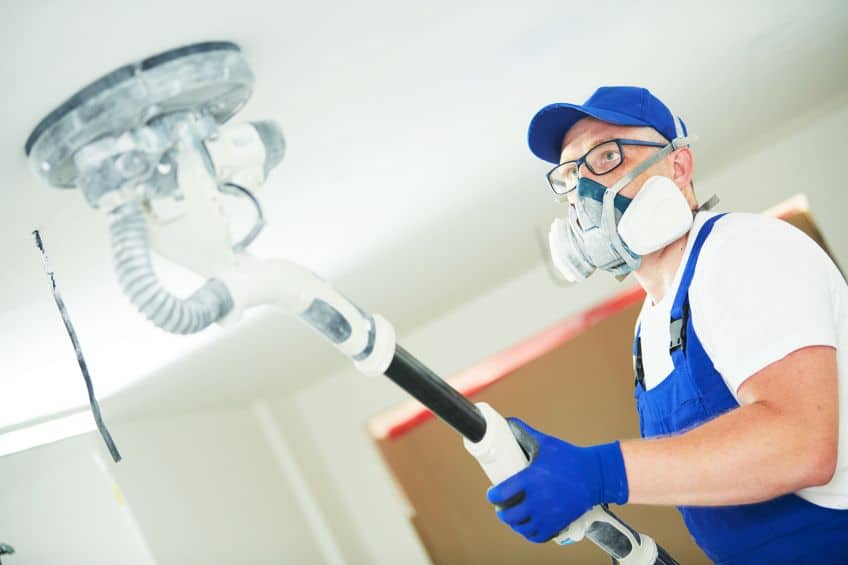
These types of sanders can come with added features like a large capacity dust compartment, multiple speed settings, vibration reduction, different power modes, and many more creature comforts to make your sanding experience a pleasant one. Many contractors opt for a drywall sander with vacuum, but an option for drywall sander with vacuum often costs a bit more, therefore it’s not always a realistic option for the average weekend warrior or home improvement DIY buff. These units are an investment though so ensure you know what you are getting yourself into.
Belt Type Sanders
So, we’ll be the first to acknowledge that using a belt sander, in general, can be a real challenge if you don’t know what you are doing, or this is your first time ever using a sander that uses this mechanic. Belt sanders are sort of notorious for being the rowdy sibling of the electric sander family, and rightfully so considering that if you don’t know what you are doing or simply don’t have the skill or experience to operate one, you might experience some degree of difficulty.
To illustrate this, most beginners have a hard time sanding horizontal wood boards with one of these machines without tearing out large chunks of wood.
This does not mean that they are impossible to use, in fact, there are loads of experienced craftsmen that swear by the belt sander over the orbital or random orbital sander variety. Why? Belt sanders are powerful, and modern ones have been refined to produce less vibration and be more manageable than those initially produced. The chances are that if you learned to use a belt sander from the beginning of your crafting journey, orbital sanders feel dull and slow by comparison.
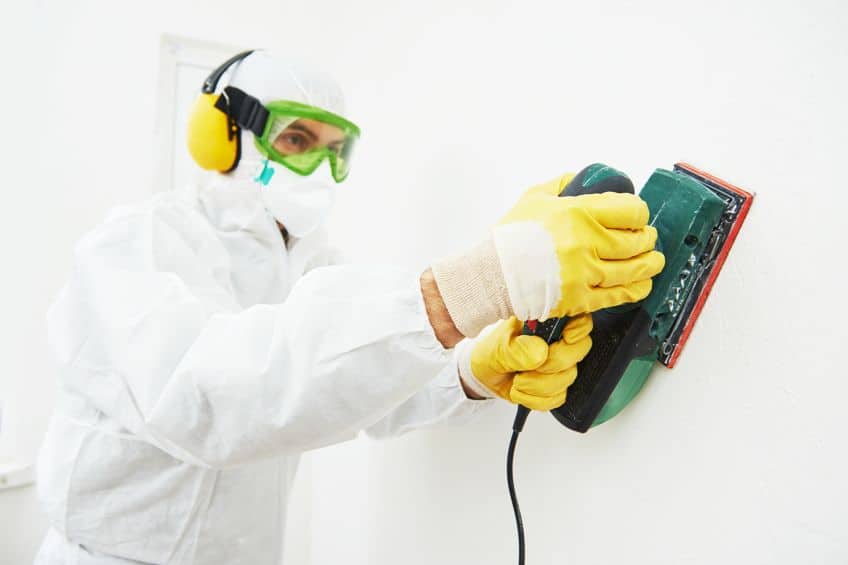
This being said, newer ones can be used for drywall sanding if you have the skill and experience needed to operate them, not to mention if you can find one which is easy to manage while sanding a vertical surface. If you are thinking about going with a belt sander for this exercise, we recommend finding one that is lightweight, with ergonomics conducive to the task at hand. If you are looking for a drywall sander with a vacuum attachment, we recommend checking out an independent attachment or simply opting for the orbital sander we mentioned previously.
Random Orbital Sander
This type of sheetrock sander is a versatile tool in the right hands. Not only does this type of sander allow you to sand virtually any surface you might come across, but it will do so in a manner that sort of defies logic. Random orbital sanders are special because of the finish they provide, they are usually used to resurface materials where the finish is of extreme importance, therefore unlike ordinary electric orbital sanders or belt sanders, they provide a neat uniform finish across the surface.
This being said, they provide this finish through moving in a unique oscillating motion in addition to the conventional rotating motion used in traditional orbital sanders.
This makes them perfect for exercises like sanding down outdoor decks or metal workpieces as they will not damage the surface they are used on. For the same reason, they work well as a sheetrock sander as they will provide a great finish either before or after your primer has been applied to the surface of your drywall. Many craftsmen in the sheetrock industry refer to this tool as a drywall hand sander due to the fact that it is not used with a pole.
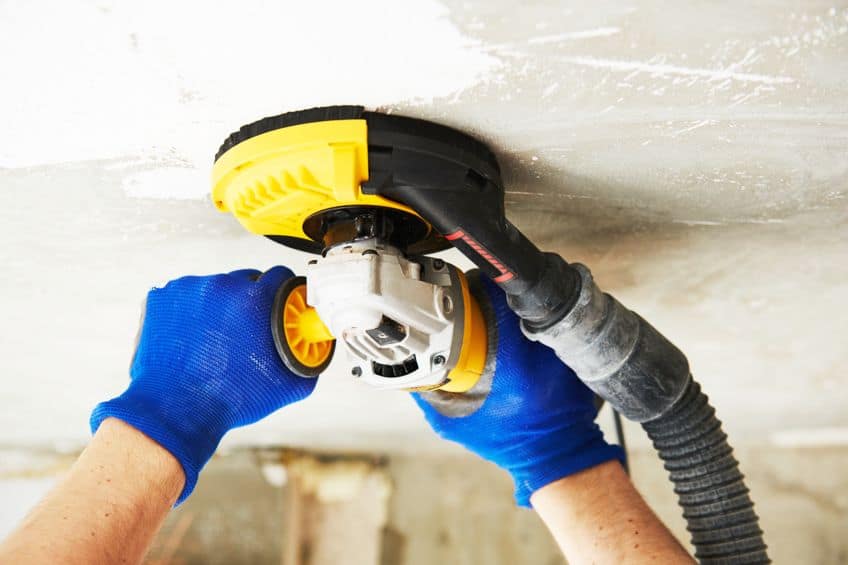
The same can be said for a belt sander (although extensions can be added and are readily available in the aftermarket). Although this might require a bit more elbow grease on your end, this type of sander will provide you with a premium finish, the drawback being that it will take a bit longer to complete a drywall sheet compared to the aforementioned electric drywall sander.
Dustless Drywall Sander
We would be remiss not to mention this type of sander if talking about sanding drywall. The sanders we have covered thus far are versatile devices that can be used for a number of other applications and are simply rudimental power tools that have been slightly modified to fit the drywall sanding application. The dustless drywall sander on the other hand has been designed for one purpose and one purpose only; to sand drywall in the most efficient, dustless way possible How does it do this you ask? The dustless drywall sander looks a lot like a 3D rectangular broom that happens to have a powered impeller in the center of the block.
The shape of this tool not only makes it perfect for sanding down a vertical surface efficiently but as an added benefit it will leave virtually no dust behind once an area of the sheetrock has been completed.
How does it do this? We mentioned that the head of this device has an impeller in the middle of it. This impeller sucks up all the drywall dust displaced during the sanding process and stores it for disposal once a section has been completed. Most models are vacuum-powered and can reach an incredible 10,000 RPM without breaking a sweat, which means you won’t have to work as hard sanding or cleaning up!
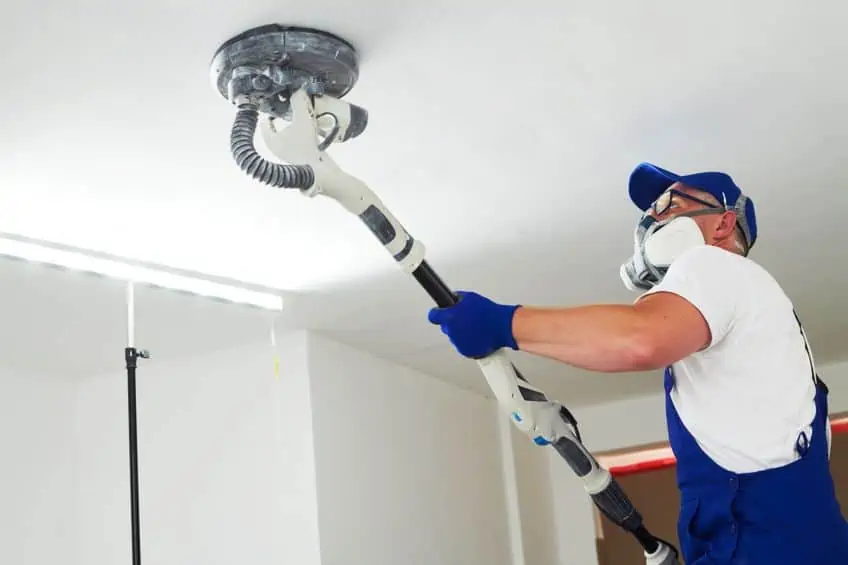
It seems that more and more contractors and DIY enthusiasts are opting for this type of sander due to the ease with which it handles hard-to-reach places like corners and ceilings, but it can get a bit noisy after a while due to the vacuum power. On the other hand, if you don’t own a vacuum this might not be the best choice of tool for the job. A dustless drywall sander will get the job done and get the job done well, so if you don’t mind the noise and like having a clean workspace this might just be the sander for you!
The Pole Sander
Are you an old-school DIY junky? Do you enjoy the feeling of getting up close and personal with a workpiece? Do you like feeling the curves and crevices of a surface as you work with it? If you are, we understand, crafting, in general, can be extremely therapeutic, and it’s for this reason that we think the drywall pole sander might be right up your alley! The drywall pole sander is essentially a hand sander that has been attached to a pole with a pivot mechanism (like those new cool floor mops which change direction) which allow you to switch up your angle of approach at the flick of a wrist!
If the task ahead is just one or two walls and you’re on a budget, or you simply like doing things by hand this type of drywall hand sander could be exactly what you are looking for if sandpaper is out of the question.
The downside is that you won’t have the added benefit of a dust collector on board, but the advantage you have with a manual device is that you can feel every little bump you sand over, and although it might take a bit longer, you will have much more control over the finish.
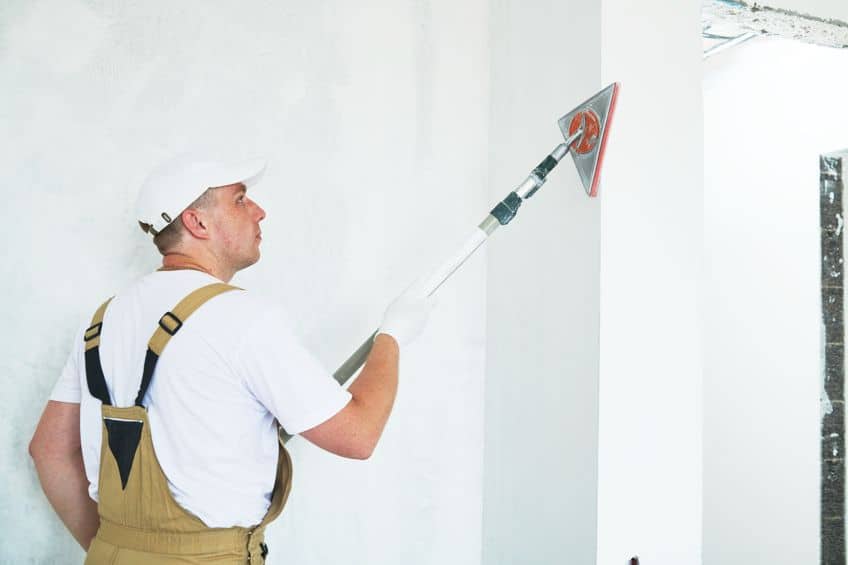
This tool uses a screen instead of sanding paper, this means that you will have added longevity and be able to go at the job for longer than you would with conventional sandpaper or a power sander. If you’re looking for a drywall hand sander for your next small job, we recommend you give one of these a shot as they provide an excellent range of movement, and because of the rectangular contact surface, they are great for sanding corners!
What to Consider When Choosing a Drywall Sander
Now that you have had a look at some of the best drywall sanding tools on offer, here’s what to look for before you hit that buy button! Remember, not all devices are made equal, but you should choose a device that suits your workload, application, and pocket.
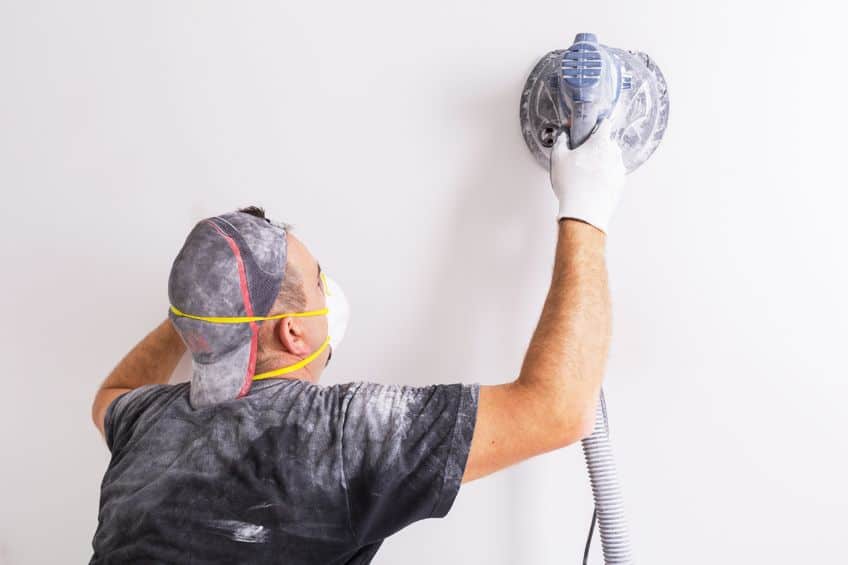
Power Output
Getting the best drywall sander for your money is important. Sanding anything is a labor-intensive job, and by design, power tools are meant to reduce the load on your body and mind so you can breeze through your project.
This being said, buying a power tool that lacks in the power department is a bit counterproductive, to say the least.
Ensuring that your drywall sander has enough juice to make your job go quick and easy is important, the last thing you want while sanding down an entire home’s worth of drywall is to feel like you might as well be using a manual pole sander. A decent sander will put out between 5 to 7 amps of power and typically have a lower RPM (revolutions per minute) unless it’s vacuum-powered.
Speed of the Motor
If you consider other power tools like a power saw or a bench grinder, they don’t make their power via torque, rather they have really high RPM redlines in order to produce more working power. This is great if you need a machine to be powerful, but higher RPM often translates to higher noise and vibration.
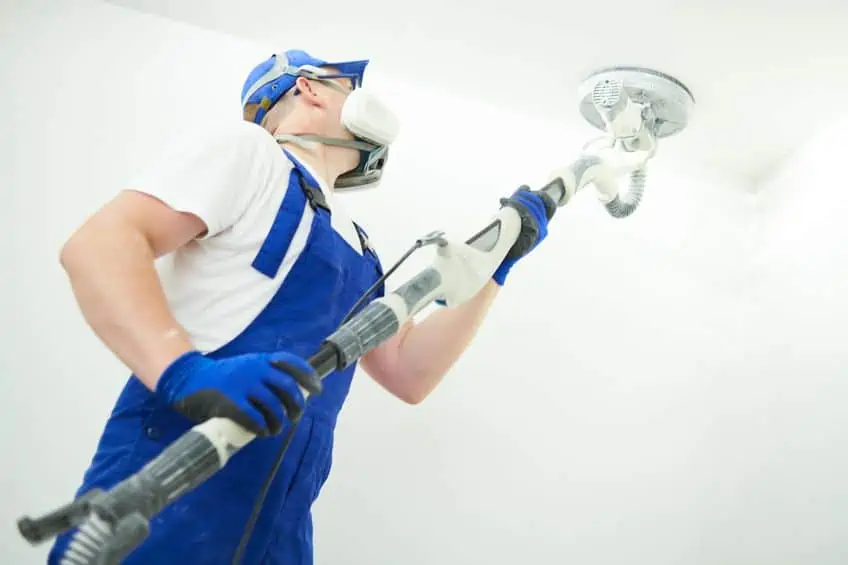
The best drywall sanders on the market often have a maximum RPM of 3000 to reduce vibration and ensure a good finish, after all, you are holding a pole with a motor attached to it, and unless you’re like some really sore wrists and ringing eardrums, we recommend choosing a drywall sander with a relatively low RPM. The only exclusion to this rule would be with those that are vacuum powered as they need a bit more spin to get up to speed compared to conventional sanders.
Length of the Hose
Drywall sanding is a messy job, so even if you have the best drywall sander money can buy, the fact remains that you will have considerable clean-up to do once you have completed the job. The idea of dust collection tubes and impellers is to minimize this mess as much as possible, ensuring that you don’t have to clean all of the joint compound and drywall plaster you sanded off yourself at the end of the day.
The length of the hose a device is equipped with plays an important role in your range of motion and therefore your mobility, which ultimately impacts the quality of finish you have and your overall morale while working.
Knowing this, there is no “correct” length for drywall hose, instead, you should choose a unit with a length applicable to your application, taking into account a few things; Will you be sanding ceiling panels? Will you be working in a relatively large room? Will you be working at multiple sites? How tall are the panels you will be sanding? Asking these questions and more subjective ones will lead you to the right answer for your drywall sander needs.
Now that you know what makes drywall sanders special, which types of sanders can be used for drywall sanding, and what the best drywall sander looks like, and how to successfully tackle sanding drywall on your own, it’s time for you to go out and put your newfound skills to the test. Remember to always protect your workspace and yourself against drywall dust, and pick a drywall sander that is conducive to your specific application.
Frequently Asked Questions
Do I Need a Drywall Sander?
Technically, you can use any sander as a drywall sander if you have the skills and the knowledge to do so without damaging the surface. The best drywall sander will take a lot of this strain, allowing you to work with peace of mind and reduced effort over long periods of time, unlike a regular sander.
What Kind of Sander do You Use to Sand Drywall?
Ideally, you would like to use a random orbital sander to sand drywall. Why? Drywall sanders need to be able to provide a smooth finish, and a random orbital sander can provide this finish with significantly less effort on your part. The ideal setup for sanding drywall is a poll-mounted random orbital sander with a dust collection facility.
What Grit Sandpaper Is Best for Drywall?
Drywall is a sensitive surface that produces fine dust, therefore the probability of making a mistake is high, and when working with drywall mistakes can take considerable time and effort to correct. It is recommended that you use fine-grit sandpaper (120-150 grit) with minimal pressure to sand drywall surfaces.

I have been into woodworking since 2005 and woodturning since 2011. Because of my love for wood and woodworking, I started woodhappen.com to teach other enthusiasts about how to finish and seal wood, the best woodworking tools, the different types of wood, and everything else related to woodworking! Read more about me here.

